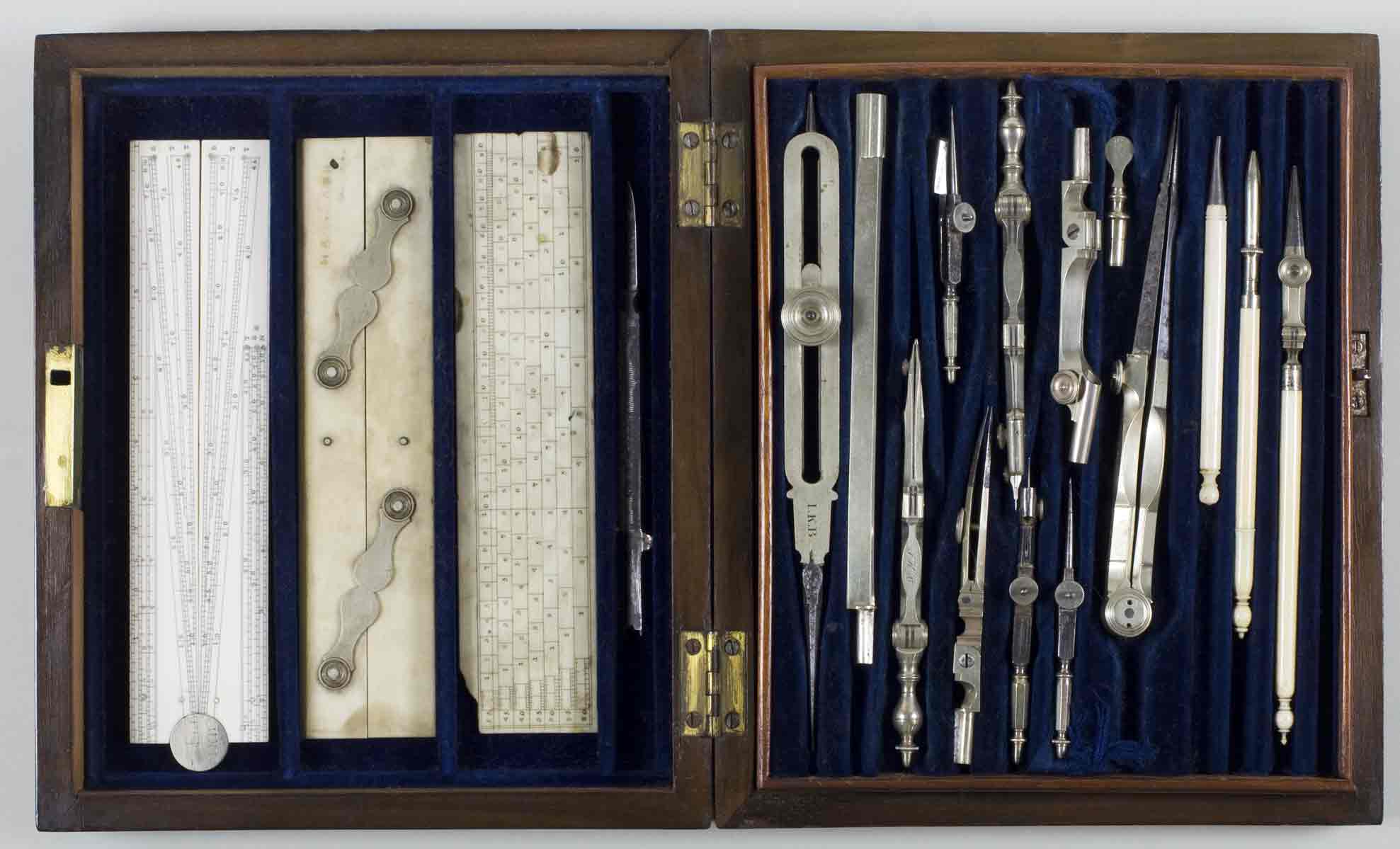- This drawing set belonged to Isambard Kingdom Brunel, it contains 18 different drawing instruments which would have helped him to design detailed new structures, and sketch ideas. The box contains rulers, compasses, pens, and dividers.
- The drawing instruments, which date from 1836 to 1858, are made from metal and ivory. Many of the objects are engraved with either I.K. Brunel or IKB. The engraving is in a few different styles, suggesting that Brunel either added to the box over several years or replaced items if they were lost or broken.
- The instruments are stored inside a wooden box; on the lid there is a brass plaque engraved I.K. Brunel.
- Before computers and digital drawing, technical designs, such as for new buildings or bridges, were drawn by hand. Drawing instruments such as these would have been used by engineers, mathematicians and architects to help them with their work.
The Story
Artist and Engineer
Isambard Kingdom Brunel’s father Marc Brunel was an engineer; he wanted his son to become an engineer as well, and he encouraged Isambard to draw from a young age. The ability to draw was an essential part of being an engineer, as all designs at this time were drawn by hand. Brunel was very good at not only drawing the technical aspect of a design but also at adding the decorative details, such as sphinxes in one of his designs for the Clifton Suspension Bridge.
Despite having a compass for drawing circles in his set, Brunel was able to draw perfect circles freehand and would often doodle them in his notebooks. Whilst travelling on the Liverpool and Manchester Railway, Brunel noticed that he could not draw his circles easily due to the movement of the train. He knew there had to be a better option and decided to try and produce a smoother railway line. This lead to his design of the broad gauge track for the Great Western Railway (GWR); the wider distance between the train lines provided a smoother journey.




